Trending
Opinion: How will Project 2025 impact game developers?
The Heritage Foundation's manifesto for the possible next administration could do great harm to many, including large portions of the game development community.

Featured Blog | This community-written post highlights the best of what the game industry has to offer. Read more like it on the Game Developer Blogs or learn how to Submit Your Own Blog Post
As a horror game developer (mostly known with Clown House, Self, Interactive Horror Stories), I have got some theories about how to create a game that scares people. They worked for my games, I'll share them! Examples from my games are given.


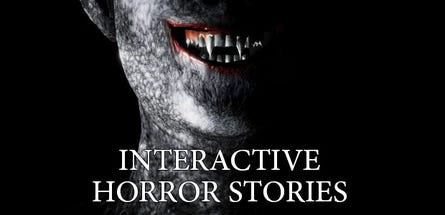
My name is Ahmet Kamil Keleş and I'm mostly known with my horror games; like Clown House, Self, Interactive Horror Stories, Lost Answers. I usually get "The game was too short, but it was scary" reaction, so I wanted to share some tips about how to create horror.
There are different ways to scare players, different aspects of horror. What I will list here are how I manage scaring people, of course you can still scare them without any of these.
As this article is "How I scare people", I gave examples from my own games to explain my techniques.
Let's begin!
The oldest and strongest emotion of mankind is fear, and the oldest and strongest kind of fear is fear of the unknown.
H. P. Lovecraft
Nothing is so frightening as what's behind the closed door.
The audience holds its breath along with the protagonist as she/he (more often she) approaches that door. The protagonist throws it open, and there is a ten-foot-tall bug. The audience screams, but this particular scream has an oddly relieved sound to it. 'A bug ten feet tall is pretty horrible', the audience thinks, 'but I can deal with a ten-foot-tall bug. I was afraid it might be a hundred feet tall'.
Stephen King
One of the best techniques is to create an enemy or situation, then leave it to the player's imagination. The more we see and learn about the enemy, the less scary it becomes.
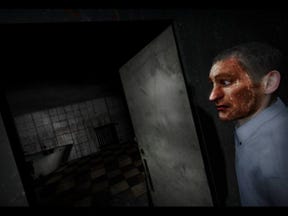
I had the idea of the bathroom part in Self after reading Stephen King's Danse Macabre, where he explains the power of the unseen. In this part, we tell player that the protagonist is afraid to get in the bathroom. The game doesn't let you click on the door to enter the bathroom.
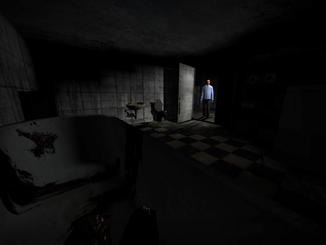
A cutscene shows the protagonist from the perspective of something in the bloody bathtub. Whatever there was in the bathtub, it wouldn't be that scary if I showed the players a 3D model, no matter how successful it would be.
The rest of Self is left as mystery in purpose. Everything in the game has a canonical explanation, but the power of the story lies beneath what is only implied.
If there is an evil character in your game, the only limit of her/his evilness should be the limits of your desired marketplace and censorship laws.
Is the antagonist running at you with a knife? That can be scary. But what makes him scarier is to know that his evilness has a depth. And when his evil side is interesting.
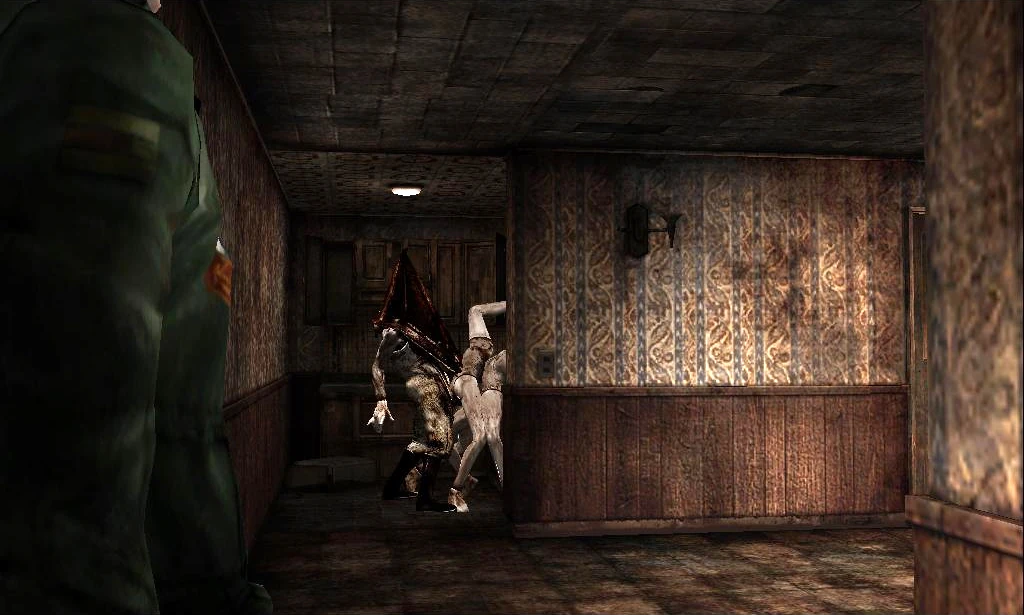
Pyramid Head of Silent Hill 2 is a remarkable enemy. A reason is because he does something we can't always see in video games: He rapes! That was a shock for me when I played the game, I know lots of other players felt the same.
That was my motive when I wrote some of the stories in Interactive Horror Stories. Some evils I tried are extreme sadism towards innocent captives, an entity that kills children in order to take in their place and claim the parent, a demon-god that takes over a king's body to rule the kingdom. And they worked!
There has to be enough light to see the darkness by.
Terry Pratchett
Darkness of the night was a threat for our pre-historic ancestors, as they couldn't see well in darkness while predator animals could. It's instinctual to be afraid of the dark.
Proper lighting is important to achieve scaring players with what they see (or not see). It might sound too obvious for you, but I've seen too much games that only uses ambient lighting in horror games.
Let me give visuals examples why lighting is important. I worked on the Dirty Bathroom Set asset pack in Unity Asset Store.

I personally love low-key lighting. It composes a stark contrast between the light and the dark. I strongly advise you to use this lighting technique.
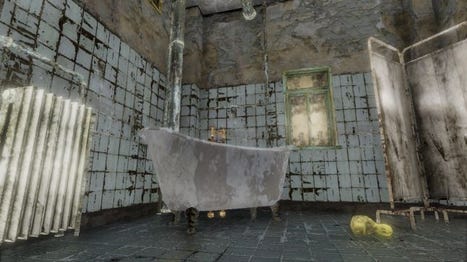
This is what the scene would look like without lighting, but only with ambient lighting. Not good.
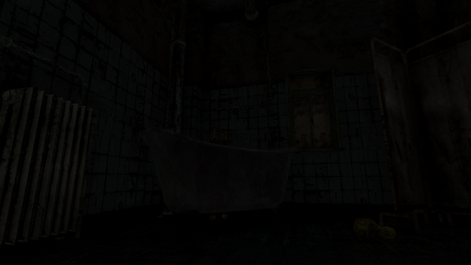
This is with ambient light with a really dark color. I said that darkness is scary, but I wouldn't prefer playing this kind of dark. I personally avoid this kind of "lighting", because what makes the dark's presence strong is the light itself.
TV Tropes has an interesting Hollywood Darkness trope about lighting.
Shadows and post-processing effects are your friends. If you use Unity, I especially advise ACES color grading in the new post-processing stack.
Horror games should be a type of roleplaying. You should see yourself as the protagonist and give decisions as her. Immersion is paramount.
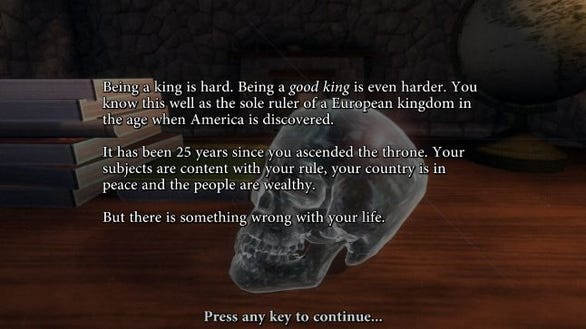
+ Let player know who the protagonist is, what she feels, what are her intentions. If we start in a dark room without any introduction, we will probably say "Hmm, what do I need to do in order to advance in this horror game?" (an immersion breaker), rather than "I am a woman locked in a prison. I must escape!".

It's perfectly okay if the protagonist has amnesia and we don't remember who we are. Amnesia and its DLC, Justine, execute the story's introduction perfectly. Because we know -and feel- what the protagonists are feeling right now. We know that we are supposed to know nothing (or little) about who we are.
+ Protagonist commentary ("I always loved this teddy bear. My dad gave it to me when I was kid", e.g.) gives her depth and forms a bond between the player and her.
+ Let her make decisions. Especially moral ones.
- Creating artifical parameters about what she feels. For example, a "depression" bar whose value decreases with time and makes you lose the game once it's 0. The protagonist gets depressed/scared even if you aren't scared at all. It creates a block between the protagonist and you, because you don't feel like the protagonist anymore, but someone playing a horror game.
- Ludonarrative dissonance is an immersion killer. Like when the story tells you that you need to escape from a house, but it also doesn't let you use the door to freedom before you kill every zombies in the level.
You can still make a scary game without following what I've listed in "How can it be done".
* Blank identity: We don't know who we are. Like in Slenderman or Clown House, we are only informed about what to do. If our object is clear, we might still take the role of a blank character. We might fill the blank parts with our imagination. Or better, the protagonist is our real life identity and we are literally living what the game offers.

* Forced identity: The game might force you to do evil things and the only way not to do these are quitting the game. Masochisia is a great example, it gives you a false sense of the ability of making moral decisions. And it really works on making you feel like you are the protagonist, because you have innocent dialog options, but you see that they don't actually work.
* You are the monster: The game doesn't let you know about your true nature. You think that you are an innocent person, but you find out that you are actually the antagonist. Some of the Bite-Sized Horror Games are perfect examples.
A famous, another example belongs to a game where you play as 4 characters and try to find the identity of a serial killer. The twist is, we learn that one of the characters were actually the killer all the time and he knew it. The game is Heavy Rain.
This twist shocked me, but it angered lots of players. Because it was a clear ludonarrative dissonance. So be careful about that.

It can be scary when you are unsure about the intentions of a character. And when you have to trust them.
That was the the core idea in Clown House. The game features three clowns whose intentions are either good or evil, randomly set each time you start the level. You have to find the key to escape, the evil clowns attack you randomly when you don't see them.
Clowns scare many people, a theory is "uncanny valley". I think another reason is because clowns are unpredictable. They are above social rules, you can expect pranks from a clown. That unpredictability is why I made this game with clowns.
Evil All Along trope can be quite scary, too. You trust someone and do what he tells you, but he was the enemy all along. I used this twist in a horror adventure game called Lost in the Nightmare. I
We knew that the antagonist of the story was a demon-ghost with supernatural powers. The story featured an old man that was quite friendly with us, showing us hospitality. He manipulated us to murder a guy, who we thought to be the henchman of the ghost, and complete a ritual that gives the ghost the ability to take physical form again.
At the end of the game, he was behind a mirror covered with a curtain, asked us to pull it. You can guess what we saw. I think that was the scariest part of the game.
Another example is what you have read in You are the monster section of this article. That protagonist of Heavy Rain looked so trustworthy.
I believe that the ending of a horror story is the most important part. If the beginning is scary, but nothing interesting happens at the end, that doesn't leave any impact at all. Try to keep the climax at the ending.
I also believe that a satisfactory ending should offer a conclusion to what we are playing. It is not satisfactory to see the credits at a point where you were expecting the story to continue. I think a good story tells a message at the end.
Self is both a positive and negative example. It scared people, because something unexpected and scary happens at the end. But people also said "The story was too short, it ended too abruptly!". Not only because the game length is 15 minutes, but the ending doesn't conclude what happens. The story has no moral, no message at the end (actually it does, but it is quite hard to see, that was my fault).
Madness in Infinite Loop story of Interactive Horror Stories is also an example. It tells you the story of a man who wakes up to the same depressing day, even if he commits suicide (see: Groundhog Day Loop). At the first release of the story, readers simply hated it. Because I wrote it so that you could never end the loop, there was no exit from the story but the Escape button.
I understood that people hated it, because the main design pillar of previous stories ("Let player be able to reach a good ending") was absent. Another reason was that a good story needed a conclusion.
Then I updated the story. Now you can actually break the infinite loop and reach redemption. The story has a conclusion and a message now. Now the players love it.
Here I explained how I manage creating horror. Please share your thoughts and theories!
Read more about:
Featured BlogsYou May Also Like